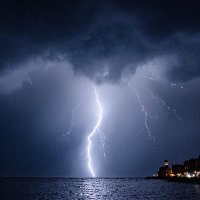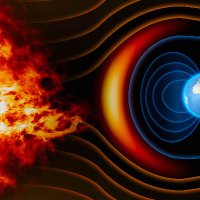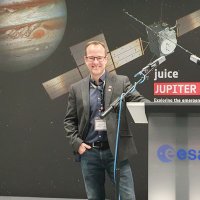
Christian Möstl
@chrisoutofspace
Head, Austrian Space Weather Office @ASWOGeoSphere | @geosphere_AT |☀️💥💨🌍 | @ERC_Research HELIO4CAST | helioforecast.space |
ID: 24692611
https://orcid.org/0000-0001-6868-4152 16-03-2009 13:47:26
4,4K Tweet
3,3K Followers
1,1K Following


Pretty amazing moonlit #aurora in the sky over central Slovenia this evening! Visually beautiful crimson red display with distinct rays and motion. Lower mid latitude. Dr. Tamitha Skov Harlan Thomas Landon Moeller #StormHour Daniel Fischer @[email protected] PK Dunja (@[email protected]) Meteoinfo Slovenija Portal v vesolje



Polarlichter am Wörthersee in Kärnten gestern Nacht. Peak um ca. 21:30. #AuroraBorealis in Carinthia last night, peak 9:30 PM CET. Christian Möstl Clemens TZ InViennaVeritas ChristineScharfetter Jure Atanackov Manuel Oberhuber Damian Thread /1







Scott McIntosh Some major steps would include: - see the aurora at all times (✅ European Space Agency Aurora C and D, 2027 and 2030) - go to L5 (✅ European Space Agency Vigil from 2031) - have a few spacecraft in far distant retrograde orbits (DRO) or at ~0.5 au around the☀️, telling us the magnetic field of incoming CMEs.


The Austrian meteorological and geophysical service geosphere.at, of which we Austrian Space Weather Office, GeoSphere Austria are a part, gets a 30+ % budget increase and steady planning for 2024-2026. Really awesome to see this recognition of the environmental sciences! 🌦️☀️💨 (german) science.orf.at/stories/322546…

Out on arxiv today, I co-author a new paper led by Andreas Weiss NASA Goddard in which a deformable flux rope model 🤯 for #solarstorm magnetic fields is introduced. An application to a multipoint CME observation on 23 April 2023 is included too! arxiv.org/abs/2406.13022


Cool 😎 article by Kasha Patel in The Washington Post on the current #solarcycle and its amazing #aurora events, quoting me, Scott McIntosh ☀️ Sara Housseal ☀️ and others. washingtonpost.com/climate-enviro…

While we wait for images from ESA's Juice mission's Earth flyby last night, it's fun to play with NASA's "Eyes on the Solar System" website to follow along the trajectory for the past 48 hours. eyes.nasa.gov/apps/solar-sys…





